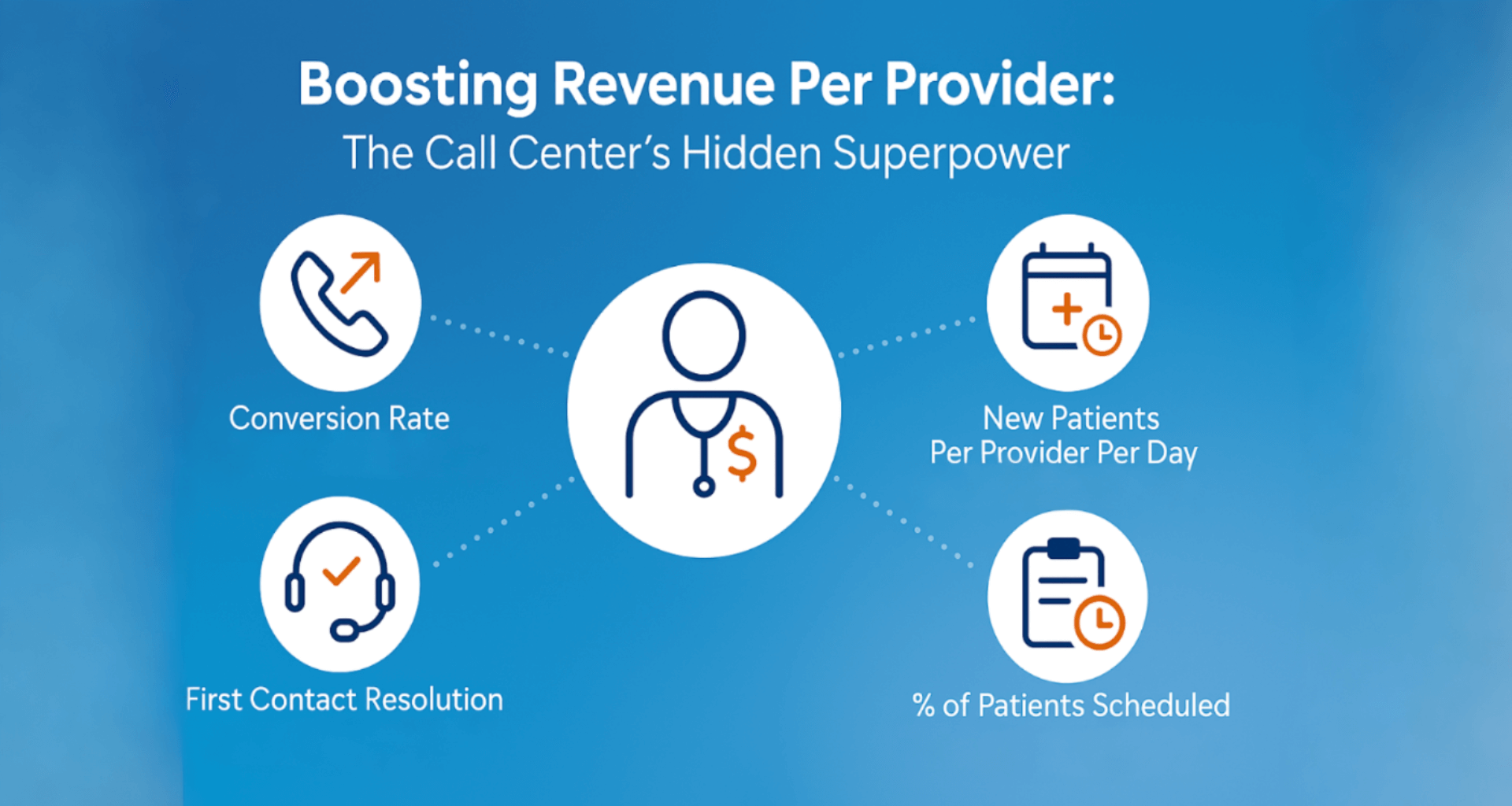
Tipping Point
In 2000, social scientist Malcolm Gladwell popularized the “tipping point” concept in his book, Tipping Point. A tipping point is a critical point in time when a complex system undergoes a significant change. It often describes a period of rapid transformation or a sudden shift in public opinion or behavior due to a specific event or phenomenon.
For example, the introduction of the iPhone in 2007. This device and its subsequent releases revolutionized the mobile phone industry and quickly led to the mass adoption of smartphones worldwide.
Patient access is going through a tipping point. Each of the technological solutions below are available today. But we’re just getting started.
Ask yourself: Do you have any of the following healthcare access problems?
Do you have high abandonment rates? Or is your online scheduling less than 10% of your total scheduling?
Outdated scheduling systems—systems which require patients to call and wait on hold or leave a message and receive a call back—are the biggest barrier to patient access. Many healthcare providers still schedule each appointment manually via laborious processes, which drives inefficiencies and errors.
According to a study from the Commonwealth Fund, calling and waiting on hold is patients’ #1 pain point. When patients spend countless minutes on hold, pacing anxiously around their home or office, they sometimes abandon their journey altogether. We call these "Jammed Journeys."
THE TIPPING POINT
The solution to these debilitating scheduling problems is two-fold:
- Providers must build an online self-scheduling platform, one which empowers patients to schedule, reschedule, and cancel their own appointments digitally. 66% of patients are willing to switch to a provider who offers online self-scheduling.
- Healthcare organizations should utilize call support software, which helps scheduling staff more quickly and accurately schedule appointments, which in turn lowers hold times for patients.
Picture this: your agents at their desks, engaged and dynamic during their calls with patients, rather than confused and frantic. And imagine this: your patients leaving your organization positive online reviews, in droves, because they seamlessly self-scheduled online or received quick service when they called.
Everyone wins when automation creates less work. Streamlined access for patients means explosive growth for providers. Automate your scheduling system with self-scheduling and call support software, and watch your efficiency soar.
THE FUTURE
The most advanced self-scheduling platforms will eventually handle every appointment type for every speciality, which will revolutionize healthcare delivery. Instead of relying on staff members to take calls and enter information manually, completely automated systems will schedule all appointments with no manual touchpoints at all.
This technology has huge implications:
- Staffing expenses will plummet.
- Patients will easily book any appointment—surgery, labs, imaging—through a simple digital process.
- Administrative workflows will be streamlined thanks to no double-entry or manual processing.
- Overall efficiency levels at healthcare organizations will skyrocket.
- Providers will save time and money.
Do you struggle to satisfy HIPAA regulations because of your outdated technology?
Many healthcare organizations use outdated technology or rely on 100+ page paper manuals. Because of increasingly complex regulatory protocols, including HIPAA laws, this makes it virtually impossible for these organizations to satisfy compliance requirements and simultaneously perform with efficiency.
The healthcare industry, for better and worse, is characterized by a maze of regulations, laws, and protocols. It's an arduous job to carry out tasks while meeting this cornucopia of rules—rules which if not followed risk both patient safety and legal liability.
THE TIPPING POINT
Cutting-edge access software relieves this burden from your staff's shoulders. The software has built-in HIPAA compliance and other protocols, customized to your staff's workflow. Your staff therefore need not worry about meeting regulatory standards while helping patients.
THE FUTURE
Regulations will only increase exponentially as privacy and security threats mount. This means future patient access technology will require increasingly sophisticated automation and algorithms to meet increasingly complex HIPAA regulations and other laws.
For many healthcare organizations, this will require a significant investment in automation and algorithms to ensure compliance with ever-evolving standards and legal requirements. This is particularly true for larger organizations with multiple locations and ever-growing databases of patient information. Many smaller clinics may not yet have adopted such advanced technologies, but they will likely need to in order to remain secure and compliant in the future.
The increasing complexity of HIPAA regulations and other applicable privacy laws is a daunting reality for healthcare providers who want to manage their patients’ sensitive data safely. Advanced automation is increasingly necessary given the rise of cyberthreats, which make it more difficult for healthcare providers to protect their systems without having a robust security protocol in place.
There’s also a growing need for qualified personnel who understand and can implement these technologies. As the industry continues its rapid expansion, finding trained professionals who can develop sophisticated patient access software will become ever more important.
Are you missing a patient-provider secure messaging system?
Many providers don't have a secure SMS and email communication system. This means patients who have non-urgent questions or concerns can't relay those questions or concerns to their physician, and this hampers access to care.
Patients increasingly demand the power to message their provider—anytime and anywhere—whether it’s midnight or they’re at the airport. Patients are less likely to stay loyal to providers who don't offer secure messaging.
THE TIPPING POINT
To improve access and ensure quality care, all providers must offer a secure instant messaging platform that is integrated with text and email.
Studies have shown that patients prefer to communicate with their physician via digital messaging for non-urgent health issues. A secure messaging system improves the patient experience by creating another access channel. In an age of healthcare consumerism, virtual access points ensure consumer satisfaction and engender better outcomes. Digital messaging is essential to modern, patient-centered care.
THE FUTURE
In the future, AI medical assistants will potentially eliminate the need for humans to provide any patient care at all. This will drastically reduce the time and energy that physicians, nurses, and healthcare providers spend answering questions from patients.
AI medical assistants could revolutionize medicine. Instead of waiting days or weeks for a human doctor to answer a question, a patient would receive an immediate response from an AI assistant. Because there would be no need to schedule appointments or trek to the hospital, patients could access medical advice quickly and easily from the comfort of their own homes.
Health systems will see dramatic improvements from AI medical assistants:
- AI assistants will remove the need for clinicians to constantly respond to patient messages. Doctors can therefore focus on tasks that require specialized attention such as interpreting test results or diagnosing complex conditions. And, thanks to fewer interruptions during their shift, physicians and nurses could devote 100% energy to patient care.
- There will be greater accuracy in diagnosis and treatment, because AI instantly analyzes large amounts of data without fatigue or bias. By cross-referencing medical records with cutting-edge research findings and comparing it against previous case studies, AI will generate vital insights into diseases, causes, and treatments.
- AI may identify symptoms earlier than any human physician could, which will improve outcomes for patients around the world.
Do you, like most American providers, have abysmal patient engagement?
According to a study from the Commonwealth Fund, the American health system, among developed countries, has the lowest engagement rates in the world. This dearth of engagement greatly impedes healthcare access, because disengaged patients are less likely to be interested in, let alone actively participate in, their health affairs. Low engagement rates decimate outcomes for entire subsets of the American populace. Poor engagement also drives up the per-capita cost of healthcare.
THE TIPPING POINT
To improve access, we must strengthen engagement. Patients need to take ownership of their health.
Technology creates and facilitates engagement. If you automate your access system, patients are automatically sent essential information—preventive care updates, links to community partnerships and human services, information about chronic diseases, mental health tools—which involves them more in their healthcare.
Engagement automation also sends patients appointment reminders and rescheduling links, which reduces no-shows and boosts satisfaction.
THE FUTURE
In the future, all engagement and healthcare marketing will be 100% automated. This means humans won't monitor or build automation into their system at all; the AI will take care of it. This has a number of implications for the healthcare industry.
For one, fewer people will work in healthcare marketing and engagement, which means less job security and stability. It could also lead to lower wages.
On the brighter side, automated marketing and engagement will mean better outcomes for patients. For example, if AI automatically enrolls a patient, based on their medical history, in a clinical trial, the patient may receive treatment that saves their life or improves their quality of life. Automated healthcare marketing and engagement therefore has the potential to dramatically improve patient outcomes.
Do your systems lack integration?
We call it the Documentation Nightmare: Patient and provider data is so strewn and scattered across so many disparate systems and databases that it’s almost impossible for healthcare providers to efficiently and effectively perform access tasks.
An exhaustive search for health insurance information, provider preferences, medical records, scheduling requirements, and other data is required to complete tasks, which hampers care delivery and drains revenue. Sometimes essential data isn't available at all, which prevents patients from accessing healthcare services entirely.
THE TIPPING POINT
A single system of record called Healthcare 360, a holistic database of patient and provider data, solves the Documentation Nightmare.
When advanced telehealth software centralizes all essential data into a Healthcare 360 system, your staff can access this data in real-time during their encounters with patients. For instance, if a patient calls with a throbbing pain in their chest, your staff has detailed health records and detailed provider data at their fingertips so they can direct the patient to the appropriate doctor.
THE FUTURE
The future of data management in American healthcare is both exciting and daunting:
- There will be enhanced access to medical information and health records, which will make it easier for providers to retrieve data in the moments that matter.
- As more organizations share data, fewer providers will face the dreaded Documentation Nightmare. This could transform patient care, because medical professionals will be faster and more accurate than ever before.
Eventually this may lead to a nationwide system in which all healthcare data is centralized. This would mean unprecedented access to important medical information, and thus would reduce documentation errors.
This would also facilitate collaboration between healthcare professionals across the country by allowing them to share best practices and new treatments. The possibilities of such a system are tantalizing:
- Significant reduction in cost of managing vast amounts of data currently stored in separate systems and locations.
- Improved coordination between providers in different states and jurisdictions, which will enable them to better coordinate care plans for patients who move frequently or who require multiple rounds of treatment from various specialists across the country.
Do you struggle to offer personalized care?
Many healthcare providers lack the advanced practice management technology required for personalized care delivery, and this makes it difficult to match patients with the optimal provider for that patient's specific profile: age, insurance coverage, medical history. Outdated EHR and PM operating systems are largely to blame for this lack of individualization and customization.
THE TIPPING POINT
The greater the consolidation—and automation—of practice management and EHR systems, the easier it will be for healthcare staff to personalize access and care, because they will have all the tools and information they need at their fingertips.
THE FUTURE
Patient-centered care is the future. All new technology must put patient needs first. Patients will demand ever more personalized experiences as time goes on, which means providers must stay ahead of the curve.
Patient-centered care means tailored experiences for each individual patient. This could come in the form of more detailed medical histories. For instance, doctors have access to information about a patient’s family history, current lifestyle habits and preferences, and long-term health goals. With this data, providers can make more informed decisions about treatments, medications, and other interventions to give patients what they need instead of guesswork or one-size-fits-all solutions.
In addition, cloud-based services could allow for real time monitoring of patient symptoms and concerns. Healthcare professionals would then be alerted if there is a potential issue before it becomes a severe problem.
Finally, when considering new technology initiatives, patient satisfaction should always be at the forefront. Providers must actively seek feedback from patients and respond appropriately to ensure all changes result in positive outcomes. Surveys, interviews, and other methods of gathering consumer opinion should be integrated into the process in order to get results that truly serve the needs of each patient.
Do you have limited options for disadvantaged patients?
It's simply harder for some patients to access essential healthcare services than others. Barriers include geographic location, insurance coverage, socioeconomic status, transportation options, and other social determinants.
THE TIPPING POINT
Technology that reduces the gap in health equity between disadvantaged and advantaged groups ensures everyone in the United States has access to healthcare. Whether through making it easier to schedule appointments or offering remote visits, advanced access systems greatly assist underserved populations.
THE FUTURE
Eventually, almost all of healthcare will be digitized. There will also likely be universal insurance coverage. This digitization and universalization will help level the access playing field by eliminating many of the current barriers.
Imagine a world where all medical data is stored in one secure place. Patients’ doctors could run tests remotely and create accurate diagnosis in minutes. Gone would be the days of waiting for weeks for test results and x-rays to come back from the lab.
These changes will benefit individuals across the socioeconomic spectrum. Not only will people get better care when they need it; costs will drop sharply due to increased efficiency. It will take a lot of hard work and resources to make this vision a reality.
Parting tip: Stay ahead of trends & developments in patient access technology
In the healthcare industry, it's better to be a leader than a follower, and it's better to be ahead of the curve than behind it. You should therefore make every effort to stay up-to-date on the latest access trends. It’s much easier to catch the train when it’s at the station than to chase the train down after it has left the station. Staying ahead of access trends can be the difference between success or failure.
To learn more about how technology is helping providers enhance their access system and address staffing problems, check out our blog: "How Clinical AI Answers Healthcare Call Center Staffing Shortages."
Posted By

Peter Black is an author, consultant, and digital health expert based in Los Angeles. He received his master’s degree from UCLA.
Related Post
July 30, 2025
when patients call, they’re not just dialing a number—they’re reaching for help. and...
April 10, 2025
in healthcare, every interaction is a decision point—one that can impact outcomes,...



